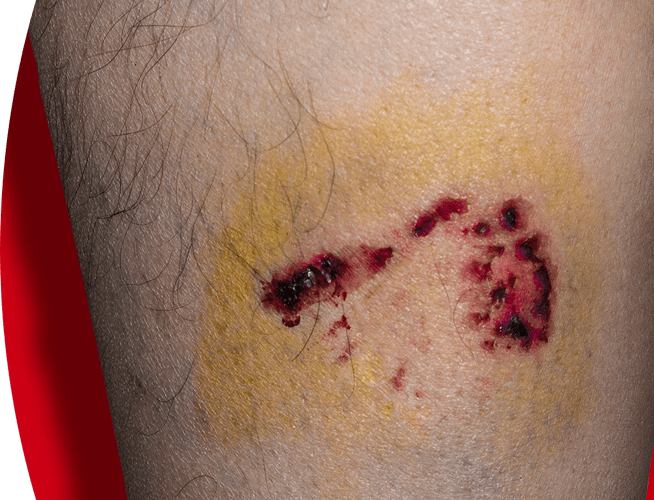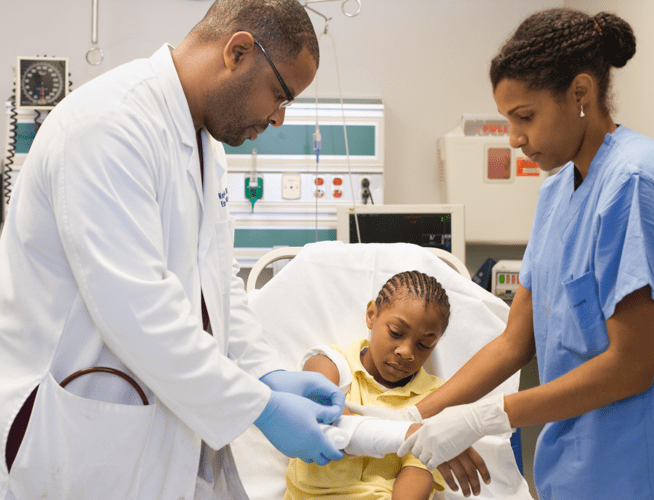Rabies Exposure in Humans
Typically, human rabies cases in the US are rare, and only occur when a rabies exposure is not treated properly. Twenty-five cases of human rabies were reported in the US from 2009 to 2018, with about 1 to 3 cases reported per year. However, the CDC reported an uptick in 2021 when 5 human deaths were attributed to rabies in the US.1,2


Can Rabies Be Transmitted From One Human to Another?
Theoretically, yes. However, there are no confirmed cases of bite or nonbite human-to-human transmission of the virus, except in situations involving human organ transplants. This includes transmission from patients to healthcare workers. Humans are considered an end host for rabies.3-5
There are a few cases where humans have gotten rabies through transplantation. Recipients of corneas, solid organs, and vascular tissue surgically transplanted from patients who died of rabies have themselves gotten rabies and died.5
Rabies Is Almost Always Fatal but Also 100% Preventable9

Addressing the Most Common Reasons for Patient Refusal of Lifesaving Rabies PEP Treatment
The Perils of Humans Ignoring Exposure
CASE 1:
In mid-August 2021, an 80-year-old Illinois man woke to find a bat on his neck. The bat was captured and determined to be positive for rabies. Health officials advised the man to start postexposure treatment for rabies immediately. He declined. Early in September, the man reported neurological symptoms, including neck pain, headache, difficulty controlling his arms, finger numbness, and difficulty speaking. He died days later, with the Centers for Disease Control and Prevention confirming the diagnosis of rabies.10
CASE 2:
In January 2018, a 6-year-old boy from Florida was bitten by a bat. Approximately 2 weeks later, he developed symptoms and later died of rabies.11
CASE 3:
A second case in 2018 involved a 69-year-old woman from Delaware who died from rabies in August 2018.11
CASE 4:
In November 2018, a 55-year-old man from Utah died from rabies infection. He started having symptoms but attributed it to a work accident and was hospitalized. He received supportive care but died about 2 weeks later. A postmortem examination confirmed he died of rabies. Although no bite was reported, his family stated that he had removed bats from his house without gloves and never received PEP for any exposures.11
CASE 5:
Two human rabies cases were reported in 2017. The first case was a woman who had traveled to India where she was bitten by a dog in March but did not receive PEP. In May of that year, she developed right-arm paresthesia followed by shortness of breath, anxiety, and dysphagia. She died in the same month.12
CASE 6:
The second case in 2017 involved a woman bitten on her right hand by a bat in August. She did not seek healthcare until she developed a fever and pain in her right arm and neck in October. She died approximately 2 weeks later.12
Postexposure Prophylaxis (PEP) Is the Only Approach Shown to Be Effective for Treating Rabies Exposures5
Important Safety Information for HyperRAB® (rabies immune globulin [human])
Indication and Usage
HYPERRAB® (rabies immune globulin [human]) is indicated for postexposure prophylaxis, along with rabies vaccine, for all persons suspected of exposure to rabies.
Limitations of Use
Persons who have been previously immunized with rabies vaccine and have a confirmed adequate rabies antibody titer should receive only vaccine. For unvaccinated persons, the combination of HYPERRAB and vaccine is recommended for both bite and nonbite exposures regardless of the time interval between exposure and initiation of postexposure prophylaxis. Beyond 7 days (after the first vaccine dose), HYPERRAB is not indicated since an antibody response to vaccine is presumed to have occurred.
Important Safety Information
For infiltration and intramuscular use only.
Severe hypersensitivity reactions may occur with HYPERRAB. Patients with a history of prior systemic allergic reactions to human immunoglobulin preparations are at a greater risk of developing severe hypersensitivity and anaphylactic reactions. Have epinephrine available for treatment of acute allergic symptoms, should they occur.
HYPERRAB is made from human blood and may carry a risk of transmitting infectious agents, eg, viruses, the variant Creutzfeldt-Jakob disease (vCJD) agent, and, theoretically, the Creutzfeldt-Jakob disease (CJD) agent.
The most common adverse reactions in >5% of subjects during clinical trials were injection-site pain, headache, injection-site nodule, abdominal pain, diarrhea, flatulence, nasal congestion, and oropharyngeal pain.
Do not administer repeated doses of HYPERRAB once vaccine treatment has been initiated as this could prevent the full expression of active immunity expected from the rabies vaccine.
Other antibodies in the HYPERRAB preparation may interfere with the response to live vaccines such as measles, mumps, polio, or rubella. Defer immunization with live vaccines for 4 months after HYPERRAB administration.
Please see full Prescribing Information for HYPERRAB.
You are encouraged to report negative side effects of prescription drugs to the FDA. Visit www.fda.gov/medwatch or call 1-800-FDA-1088
References
- Ma X, Bonaparte S, Corbett P, et al. Rabies surveillance in the United States during 2021. J Am Vet Med Assoc. 2023;261(7):1045-1053.
- Gross J. U.S. records 5 rabies deaths in 2021, highest number in a decade. The New York Times. January 7, 2022. Accessed July 16, 2024. https://www.nytimes.com/2022/01/07/health/rabies-deaths.html.
- Crowcroft NS, Thampi N. The prevention and management of rabies. BMJ. 2015;350:g7827.
- Centers for Disease Control and Prevention (CDC). Clinical overview of rabies. Updated June 20, 2024. Accessed July 16, 2024. https://www.cdc.gov/rabies/hcp/clinical-overview/.
- Manning SE, Rupprecht CE, Fishbein D, et al. Human rabies prevention—United States, 2008: recommendations of the Advisory Committee on Immunization Practices. MMWR Recomm Rep. 2008;57(RR-3):1-28.
- Ma X, Monroe B, Wallace R, et al. Rabies surveillance in the United States during 2019. J Am Vet Med Assoc. 2021;258(11):1205-1220.
- Rupprecht CE, Briggs D, Brown CM, et al; Centers for Disease Control and Prevention (CDC). Use of a reduced (4-dose) vaccine schedule for postexposure prophylaxis to prevent human rabies: recommendations of the Advisory Committee on Immunization Practices. MMWR Recomm Rep. 2010;59(RR-2):1-9.
- Feder H, Petersen B, Robertson K et al. Rabies: still a uniformly fatal disease? Historical occurrence, epidemiological trends, and paradigm shifts. Curr Infect Dis Rep. 2012;14:408–422.
- Kaur M, Garg R, Singh S, Bhatnagar R. Rabies vaccines: where do we stand, where are we heading? Expert Rev Vaccines. 2015;14(3):369-381.
- Heching D. Ill. man who denied treatment dies of rabies after bat colony was found in his home. People.com. Published September 28, 2021. Accessed July 15, 2024. https://people.com/health/illinois-man-dies-of-rabies-after-denying-treatment.
- Ma X, Monroe B, Cleaton J, et al. Rabies surveillance in the United States during 2018. J Am Vet Med Assoc. 2020;256:195–208.
- Ma X, Monroe B, Cleaton J, et al. Rabies surveillance in the United States during 2016. J Am Vet Med Assoc. 2018;252:945-957.